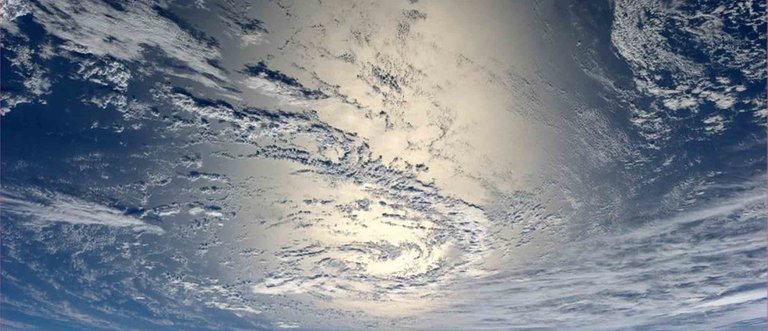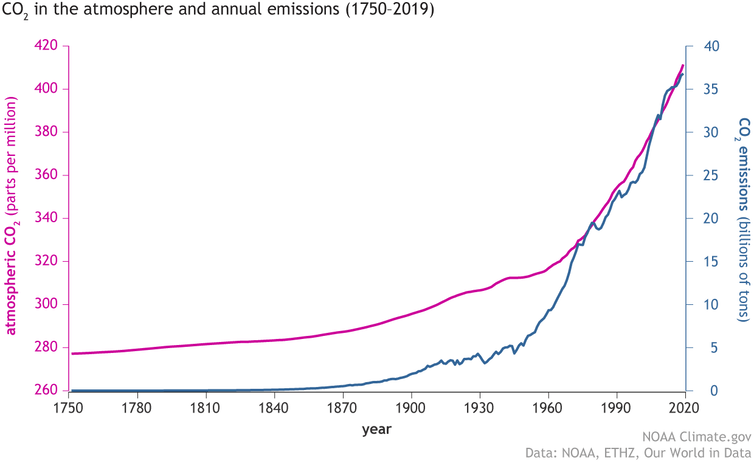
We are living in a very special time in Earth’s history. Civilisation arose when the climate was just right for us, say 10,000 years ago.
Anyone thinking mankind can easily adapt to the changes business-as-usual burning will bring is off his rocker.
Interesting: what is the rate of CO2 decline by natural means. I assume it is trivial in human terms, but could it be expressed in ‘numbers of 2020 Australians’ terms?
What name could we give that unit of measure?
I suggest that is L.E.P. Life extinction point. When the carbon dioxide reaches 150parts per Million.
Photosynthesis stops and plant and life on earth generally dies.
Limestone even marble made from the process. Maybe man slowed the point being reached.?
Unlikely that any measure possible. The idea that CO2 greenhouse gas is not science. It’d be political like most media.Consensus among scientific community is not a good thing but it should be apparent that all scientific evidence shows warming is about 6500Years in front of CO2.Rise in temperatures cause rises in CO2! The opposite of the alarmist piece Above.Surely it’s common knowledge of most objective researchers so it would be good to clear that up before the assertions of accurate or? inaccurate data

The significance of weathering as a carbon-sink
The weathering of rocks is estimated to involve the drawdown of about a gigaton of atmospheric carbon dioxide a year.
A point to make is, as CO2 is drawn down from the atmosphere, the oceans will outgas CO2. So in essence, you need to double your efforts
“Carbon dioxide is added to the air when volcanoes erupt, and it is taken out of the air as rocks and mountain ranges weather and wear down.”
Obviously volcano eruptions contain lots of CO2, but, why does weathering of mountain ranges take CO2 out of the atmosphere? Does the chemical process of weathering bond CO2?
There’s also silicate weathering.
Some basalt from the volcano will eventually help reclaim some CO2 but that apparently didn’t help Venus if you read the link. Some Earthlings think they can speed up the rate of silicate weathering with rock crushers and water sprays but the idea hasn’t caught on.
It is not always true that volcanic eruptions “obviously contain lots of CO2”. Volcanic eruptions produce on the order of 1 % of the amount of CO2 produced by human activity. By the numbers that is 400-600 tons of CO2 in an average year vs about 39 BILLION tons of CO2 for human activity. Volcanoes produce far more SO2 and ash which in very large eruptions will cool the climate if the eruption is large enough as in Mt Pinatubo 1991. But that is only temporary as SO2 and ash don’t stay in atmosphere more then a year.
Carbonate Rocks
- Carbon dioxide is removed from the atmosphere by dissolving in water and forming carbonic acid
CO2 + H2O -> H2CO3 (carbonic acid)
- Carbonic acid is used to weather rocks, yielding bicarbonate ions, other ions, and clays
H2CO3 + H2O + silicate minerals -> HCO3- + cations (Ca++, Fe++, Na+, etc.) + clays
- Calcium carbonate is precipitated from calcium and bicarbonate ions in seawater by marine organisms like coral
Ca++ + 2HCO3- -> CaCO3 + CO2 + H2O
The carbon is now stored on the seafloor in layers of limestone.
"Whatever seemed to happen in the past, temperature is certainly following CO2 now."
An apparent paradox (for me) is oceans are continuing to absorb CO2 while warming, I assume this is due in part to progressive acidification.
But are we reaching the limits of ocean uptake?
The oceans are indeed able to continue to absorb CO2 because of increased acidification. As the atmospheric CO2 continues to rise most of that CO2 is in fact taken up by the oceans which is in turn converted to carbonic acid further reducing the ocean ph.
Conclusion
It shouldn’t be surprising that a small amount of carbon dioxide in the atmosphere can have a big effect. We take pills that are a tiny fraction of our body mass and expect them to affect us.
Today the level of carbon dioxide is higher than at any time in human history. Scientists widely agree that Earth’s average surface temperature has already increased by about 2 F (1 C) since the 1880s, and that human-caused increases in carbon dioxide and other heat-trapping gases are extremely likely to be responsible.
Without action to control emissions, carbon dioxide might reach 0.1% of the atmosphere by 2100, more than triple the level before the Industrial Revolution. This would be a faster change than transitions in Earth’s past that had huge consequences. Without action, this little sliver of the atmosphere will cause big problems.
Please comment, like, share and follow for more updates.
Source
Plagiarism is the copying & pasting of others work without giving credit to the original author or artist. Plagiarized posts are considered fraud and violate the intellectual property rights of the original creator.
Fraud is discouraged by the community and may result in the account being Blacklisted.
If you believe this comment is in error, please contact us in #appeals in Discord.